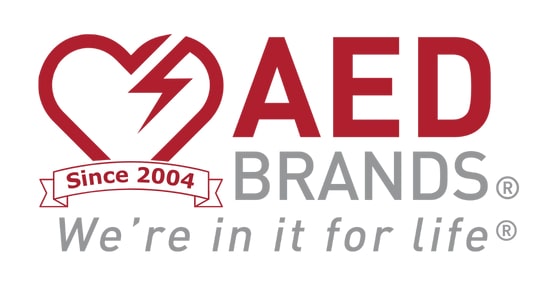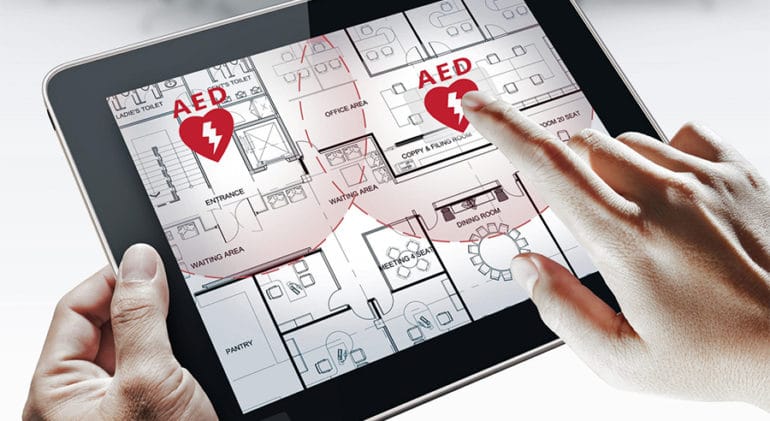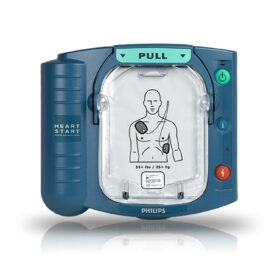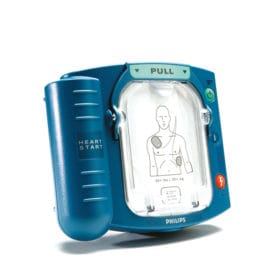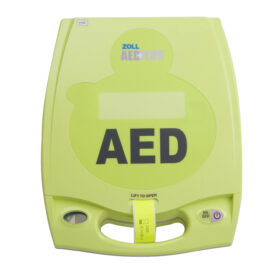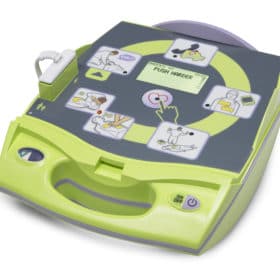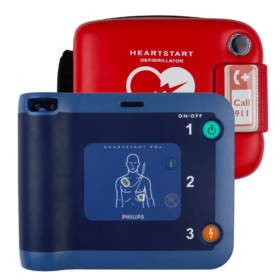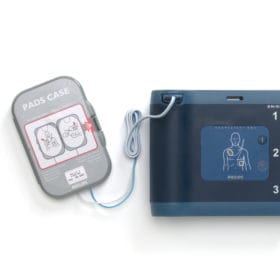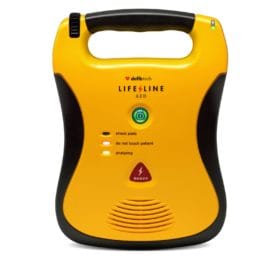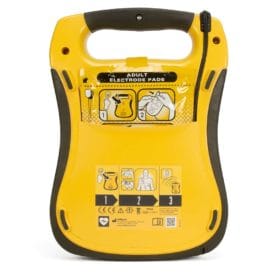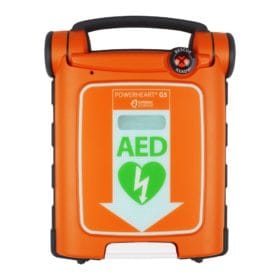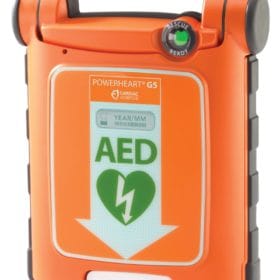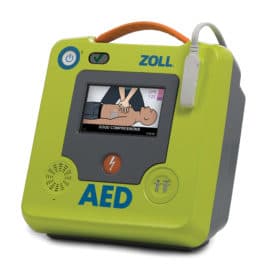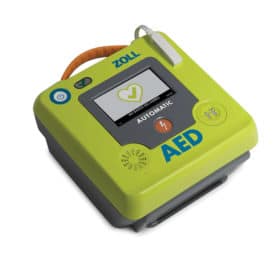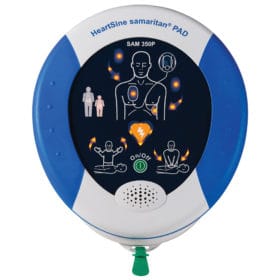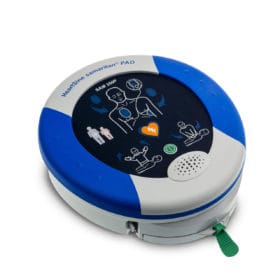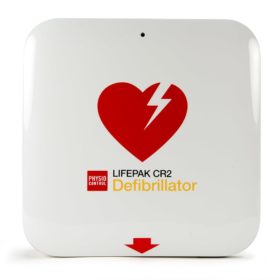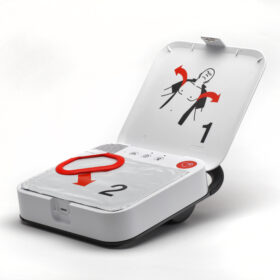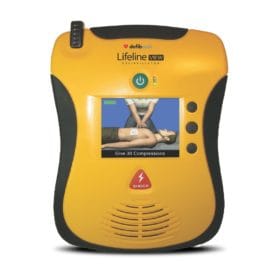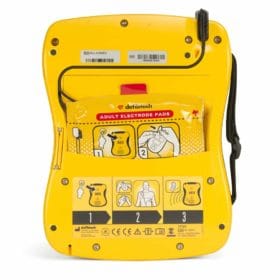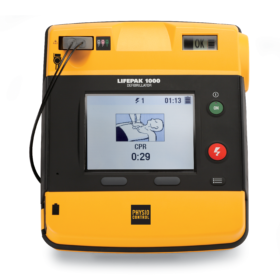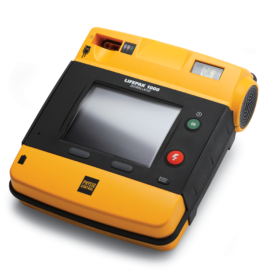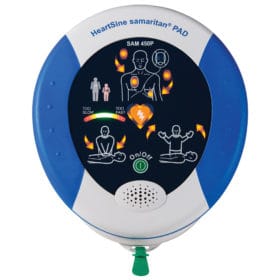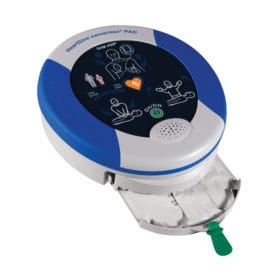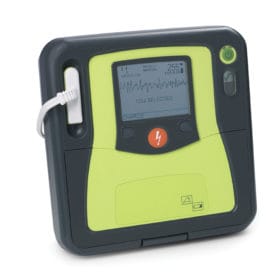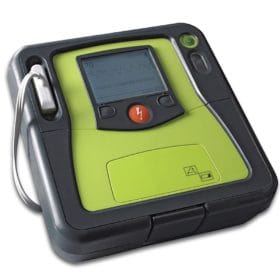- Your cart is empty
- Continue Shopping
Emergency Preparedness Kits – Office Defibrillator
Overview
Did you know that 34% of the businesses that have implemented an AED (automated external defibrillator) program and have used their AED at least once to help save a life – 66% were successful? * That’s a favorable success rate and why the placement of one or more automated external defibrillators in the workplace is recommended strongly by the American College of Occupational and Environmental Medicine and other organizations like the Red Cross and the American Heart Association.
These recommendations are not made lightly. Sudden cardiac arrest (SCA) kills approximately 450,000 adults in the United States every year. The American Heart Association recommends defibrillation (delivering an electric shock to the heart) within three to five minutes or sooner for cardiac arrests occurring outside of the hospital. That’s because survival rates drop seven to ten percent for every minute without defibrillation. When AEDs are readily available, the lifesaving results can be dramatic. Studies have shown that survival rates as high as 74% can be achieved with an effective AED program in place, the federal AED legislation is a good place to start in helping you prepare your AED program.
Sudden cardiac arrest almost always strikes without warning and can happen to anyone no matter what their age or health situation is. Treating an SCA immediately is necessary for the prevention of brain damage or death. Cardiopulmonary resuscitation (CPR) is not enough to save a person suffering from sudden cardiac arrest. CPR only keeps oxygen flowing to the victim’s brain; defibrillation restarts the heart, something that CPR cannot do.
Sudden cardiac arrest occurs when the heart’s electrical signals, the ones that control the pumping of the blood from the heart to the body, are interrupted. The ventricles (the left and right chambers of the heart) start quivering instead of contracting or pumping blood. If this ventricular fibrillation is allowed to continue for more than five minutes, brain damage or death will occur. Defibrillation is the only way to get the heart’s rhythm back to normal.
Sudden cardiac arrest is not the same as a heart attack. A heart attack occurs when the blood flow to the heart is interrupted by a blockage in one or more arteries. If the blockage isn’t treated quickly, the heart muscle begins to die, and death can occur. Signs of a heart attack include chest discomfort or pain, discomfort in the upper body – in one or both arms, the stomach, back, neck or jaw, shortness of breath, nausea, vomiting, lightheadedness, or breaking out in a cold sweat.
Signs of sudden cardiac arrest are quite apparent and very sudden and usually happen without warning, unlike the signs of a heart attack. In an SCA, the victim loses consciousness and stops breathing. An AED is the only way to get the heart beating again.
Benefits
An automated external defibrillator is a computerized, portable device that checks a person’s heart rhythm and advises a first responder on whether or not an electric shock is needed. There are many different types of AEDs on the market but they all have the same basic functions. Most are easy to use and require only minimal training.
Deciding whether or not to implement an AED program in the workplace need not be a difficult decision. Some questions to consider are:
- Can an EMS team be at the office and be administering defibrillation in five minutes or less?
- Has there been an SCA incident at the site in the past five years?
- Have the demographics of the site remained constant during those years?
- Does the site employ at-risk people or is it in a higher-risk location? At-risk individuals include:
- Men age forty or over
- Personal history of heart disease
- Family history of heart disease
- Post-menopausal women
- High blood pressure
- Diabetes
- High cholesterol
- Can one person be placed in charge of the program and be proactive and hands-on?
- Are there office personnel willing to undergo CPR and defibrillation training and willing to respond to a cardiac emergency if needed?
Features
If the answer to number one is no, and the answers for two through 6 are yes, then implementing an AED program in the workplace is probably a good idea. The following ten steps can help ensure the successful set-up of an AED program in a workplace.
- Choose a person willing and able to be the program leader.
- Review federal AED legislation, state and local laws, and regulations and advisories pertaining to AED programs.
- Find out how much the program will cost and develop a budget.
- Obtain program funding.
- Research AED brands and decide how many AEDs are needed.
- Enlist and train first-responders.
- Develop an emergency communication plan.
- Write a written response plan, and practice it!
- Develop an awareness of the program through meetings, newsletter, signage, etc.
- After an SCA emergency, review the procedures and make adjustments and improvements as necessary.
The Public Access Defibrillation (PAD) Trial study, reported in the New England Journal of Medicine (2004;351:637-46), found that two times as many people suffering an SCA survived in locations where people were trained and equipped with AEDs and CPR than if they had only had CPR training. This shows that non-medical personnel trained in the use of AEDs can use them safely and effectively and that the number of SCA survivors can double in sudden cardiac arrest emergencies.
Implementing an AED program in the workplace can be as important as installing smoke detectors and fire extinguishers and make the people who work in that office feel and be safer than those people who work in offices that don’t have a program in place.Please provide more information about school AED defibrillators for cardiac sudden arrest response
- ALS Monitor/Defibrillators
- Church Defibrillators – Automated External Defibrillator
- Dental Office Defibrillators
- Emergency Preparedness Kits – Office Defibrillator
- Golf Course Defibrillators
- Gym Defibrillators
- PAD Program – Public Access Defibrillator
- Police Defibrillators
- Professional Defibrillators – Fire and EMS Defibrillator
- School Defibrillators
Loading...
The best AED for your needs
Philips HeartStart FRx AED with FREE Carry Case 861304
Would you like these results sent to your email?
If so, just fill our your email address below and submit.
